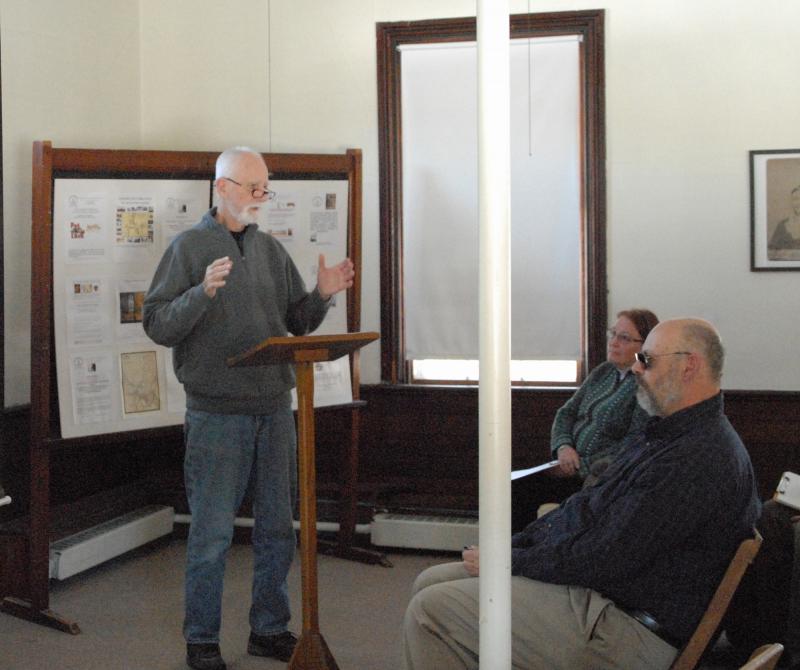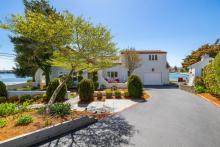Historical society talks land in Old Dartmouth
Tracing the history of Dartmouth’s earliest landowners is a challenging task, owing to a fire which destroyed many of the original records. But a group of Dartmouth historians hope to change all of that with new research.
On March 18, a group of six researchers highlighted their efforts to further the study of Dartmouth through proprietors records.
Due to the fire, researches only have records from 1660-1725 covering what was then known as Old Dartmouth, which consisted of Westport, Fairhaven, New Bedford and Dartmouth, explained presenter Sally Aldrich.
During her presentation, she also cleared up a common misconception about how Dartmouth’s land was purchased from Chief Massasoit, but it may not have actually been the case. She said it looks more like the settlers forced the Native Americans into signing over the land.
Dan Socha highlighted the historical society’s work in developing an index of proprietors records to make it easier to search. The index lists approximately 3,000 pieces of land records, and can be downloaded from the historical society’s website.
Socha also filled the audience in on how the town responded after the fire that destroyed many records. Benjamin Caine used surveys to figure out what parcels of land belonged to who so that they could be added to the books.
Richard Gifford followed families via land records for his presentation. He talked about Philip Taylor and how his wife was the joint owner of land in Old Dartmouth - uncommon at the time.
“Go beyond the records and find genealogy about who it is you’re looking at sometimes that’s essential to understand what you’re looking at.”
Marion Ryall laid out the foundations of Russells Mills Village. She explained how the selling of land made the village what it is today.
Don Plant had a copy of the original deed to Old Dartmouth, although it was missing the part about Fairhaven. His speech focused on looking at the people on the deed to Old Dartmouth, which was originally made up of 36 people and only three women.
Robert Harding examined a deed of land transferred between Nicholas Howland Jr. and Jeremiah Davoll.
“Knowing where we came from is part of knowing where we’re going,” Harding said. “One of the reasons we exist is to advance the understanding of history in this town that has a very interesting, very extensive history.”












